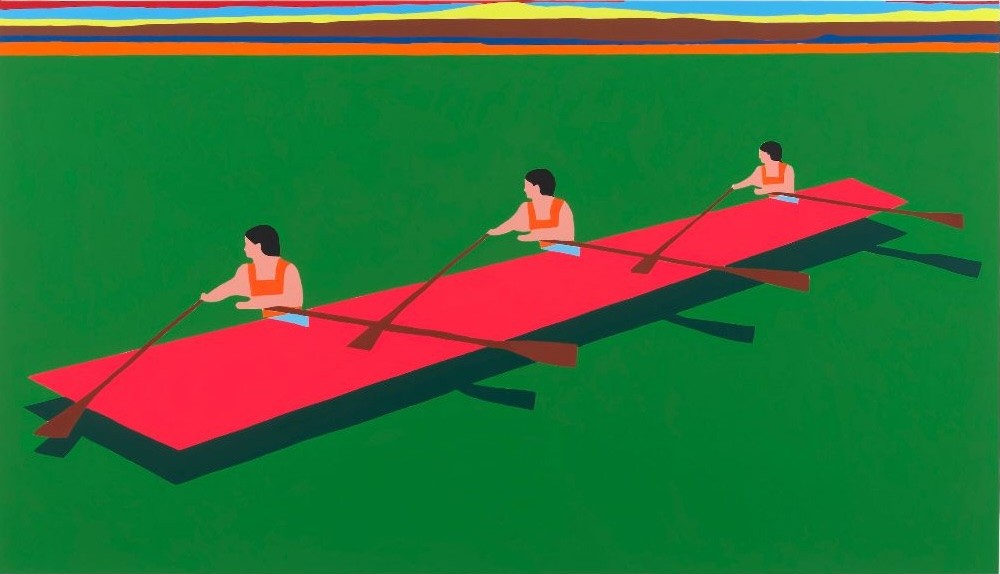
James Ulmer: Water Paintings
In Interaction of Color (1963) Josef Albers compares our reading of color to our reading of text. We do not isolate individual letters in our reading of words, phrases, and sentences, we take in a gestalt image made up of the interrelationship between them. Color, likewise, isn’t read so much as perception of individual colors but their interaction. “Colors present themselves in continuous flux, constantly related to changing neighbors and changing conditions.” Albers uses the word contexture to describe this entangled mass of information, a word which is also used to describe the linear process of threading words together to express ideas. It also applies to the interwovenness of textiles, which is another kind of threading but with the addition of one spatial dimension. One sense of the word to another is a leap across spatial dimensions. But the act of reading contexture and disentangling threads to extract meaning introduces the dimension of time. The frozen moments of activity captured in James Ulmer’s Water Paintings present color and abstraction that draw attention to the entangled tensions that exist in any moment, however active or placid it may otherwise seem.
They are intense explorations of color to say the least. Navigating the vivid marine landscapes, always with a sun low on the horizon, the mute, isolated figures add a note of existential affect, as life forms caught in an active state, lending a narrative presence. But they also serve to carve out the composition of an exact moment experienced by the beings living it. These swimmers and rowers anchor in time the graphic strips and fields of color, whose vibrating boundaries suggest the complexities and tensions of an actual lived moment, rather than one that has been mediated and reduced through documentation or memory. Speculating the nature of the narrative could lead a viewer into all kinds of psychic territory, which is all the more compelling in that the figures are engaged in flow-state athletics in which thought and awareness of the passage of time often doesn’t factor in.
But memory is also fraught with tension: what happened vs. what was felt vs. what was felt by others. Memory can be extended, distorted, or outright falsified through the uncontrollable confabulation to which we are all prone (to some degree) when re-remembering and retelling. However they are read, Ulmer’s canvases allow fractures to emphasize themselves, to literally shine in saturated palettes without attempting to rationalize, stitch or cover up. But unlike lived experience, a memory may go so far as to include the paradox of one’s own face, something that is absent in this body of work. These abstractions with their reduced forms include strange features that capture the selective limitations of direct perception: rowers arrive on invisible or hovering boats, an ominous four-fingered splash obscures a face, a diver in triplicate strobes across a watery backdrop, suns cast inexplicable dark shadows onto the terrain below them. They don’t represent reality, but a sort of sensory gestalt of a moment. They don’t render details and factual information about a moment but the tensions and contexture within one.
Frank Stella has said of Caravaggio that what interested him was not the faithfully rendered objective reality of the image, but the reality created by the effort going into the painting itself. Ulmer’s paintings, which, like Stella, reduce visual information to the bare essentials, are rigorously precise, achieving such a reality, evidenced in the determined organization of the image as well as the colors themselves. Color choice is often the starting point of the individual works—knowing, for example, that he will paint “something blue”. But achieving the right blue pushes Ulmer’s canvases into the reality described by Stella, and like Caravaggio, that reality of the object couriers a fixed moment, affording us the time to untangle its fabric not for what happened, but to imagine the many ways a moment can be felt.
-- Reuben Merringer